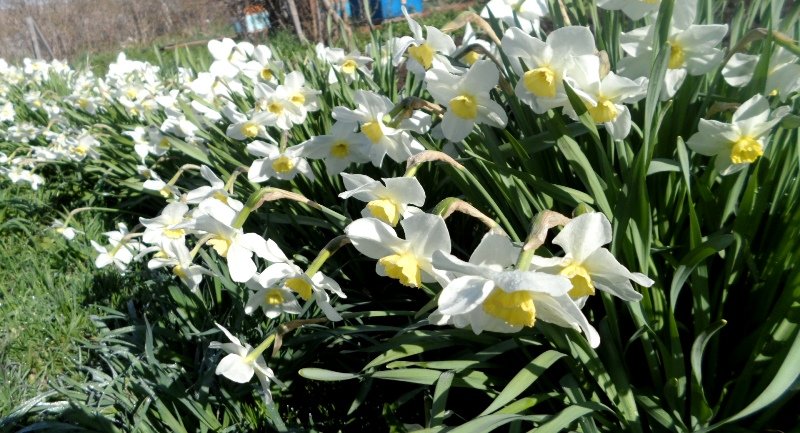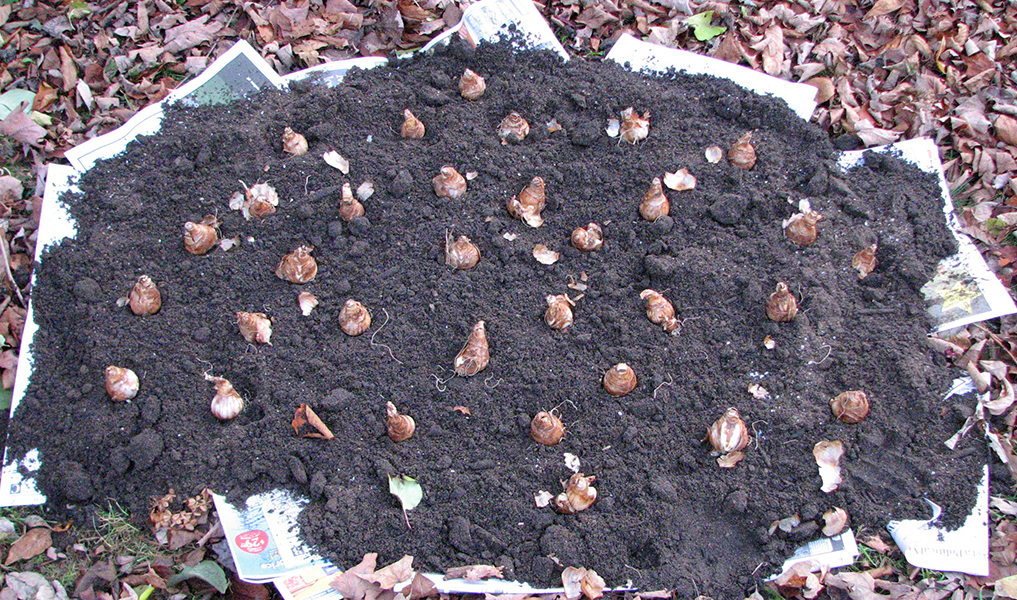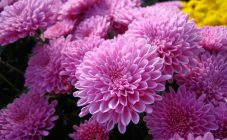Content:
Most flower growers breed proud flowers because of their beauty and unpretentiousness. But not everyone knows how to transplant daffodils so that they take root well in a new place. How to do everything right - below.
Why are daffodils transplanted
These flowers are propagated by a vegetative method - the transfer of bulbs and babies to a new place. If the process is carried out correctly, 4 divisions appear from each transplanted bush after 12 months.
Daffodil transplant is carried out in the following cases:
- when the flowering time is significantly reduced;
- there is no room left on the site for planting new specimens;
- daffodils do not develop buds well;
- there are too many plants, and this leads to the appearance of dense thickets;
- the flowers are trying to capture an area larger than the space allocated to them.
When can you transplant daffodils to another place
Experts recommend transferring flowers to another bed at a time when their first roots begin to appear. Daffodil bulbs do not require special care, so some gardeners transfer flowers when buds appear. And the period when you can transplant daffodils from one place to another begins in mid-August.
But it is not always possible to carry out the event on the specified date. If the florist missed the summer period, then the transplantation of children and bulbs can be postponed to autumn, and it cannot be carried out later than September 10th. Moreover, the success of the event depends on adherence to the sequence of manipulations.
In order for the transplant to go well, it is recommended to dig up the bulb at the moment when the leaves begin to turn yellow and fall off. Tubers removed from the soil are rinsed in a solution of potassium permanganate, and then transplanted to a new place.
Novice flower growers are interested in when to plant daffodils, whether it can be done at the beginning of the year. Breeders do not recommend transferring flowering specimens during this period because of their possible death. If spring is chosen for transplanting, then it must be borne in mind that the plants will begin to bloom only after a year.
Daffodil transplant in summer
You need to plant tubers in well-dug soil, enriched with mineral and organic mixtures. To do this, make holes 12-17 cm deep. How to transplant daffodils in the summer if children are used instead of bulbs? In this case, the depth of the hole is chosen no more than 10 cm.A distance of 30-50 cm is maintained between the individual holes on the bed.
Transplanting daffodils in the summer is as follows:
- They choose specimens that have already fallen ill and turned yellow, since they have high quality bulbs. The plant has finished flowering, so the required amount of mineral components has gathered in the tuber.
- The bulbs are quickly dug out of the ground, cleaned and disinfected in a solution of potassium permanganate.
- In the summer, the resulting planting material is planted directly on the prepared beds. Experts recommend grouping flowers or placing them asymmetrically. If the soil is heavy, then the depth of the hole should not exceed 9-10 cm.
- The planted bulbs should be watered with warm, sun-dried water. This operation is performed only on a dry summer day. In rainy weather, flowers do not need irrigation.
Transplanting daffodils in the fall
When to transplant daffodils, the site owner decides. But if this procedure occurred at the beginning of autumn, then it is better to try to transfer the plants to new beds in the first week of September. To do this, carry out the following manipulations:
- They choose daffodils, which have begun to fall off yellowed leaves. Their bulbs are dug out of the ground.
- The tubers are dried. The healthiest specimens are selected from them. They are lowered for 30 minutes. in a weak solution of potassium permanganate.
- The bulbs are divided into varieties, and then proceed to rooting them. To do this, the tubers are planted in a box with artificial soil mixed with superphosphate. They are deepened by 8-10 cm, watered with water 1 time in 3 days. After 4-5 days, new roots will appear on the bulbs.
- Carefully transfer them to well-dug and fertilized beds. The distance between flowers and the depth of the pits is the same as in the summer operation. If it is not possible to immediately plant the bulbs, then they are left for storage in a dark, dry room, where the air temperature does not exceed 16-17 ° C. Tubers are viable if they are not dry.
- After transferring the daffodils to a new place, the beds are covered with a layer of peat 8-10 cm high, covered with pine needles or fallen leaves. In the spring all this is removed.
If the gardener did everything right, then almost all bulbs survive the winter cold.
Further care
For the normal development of plants, they need watering, feeding, treatment from diseases and insects.
Fertilizers are given to flowers 4 times per season:
- The first time they do this when shoots appear. For every 1 m² of crop area, add 100 g of nitrophosphate.
- The second and third time daffodils are fed when buds appear and flowering. Then on 1 m² of beds use 50-70 g of nitrophosphate.
- The last fertilization is given at the end of the season. Plants are given 60 g of nitrophosphate per 1 m² of plot.
Irrigation of plantings must be carried out only in dry weather. For every 1 m² of a garden bed, up to 20 liters of warm water, settled in the sun's rays, is used. It is recommended to water daffodils 2 times a week.
Loosening the soil helps to eliminate weeds and kill some garden pests. If this is not done, the flowers may become infected with fungi or underground bacteria. Manipulations are carried out once every 15 days.
To prevent the plants from getting sick, they are treated with special preparations that eliminate the possibility of damage. Spraying is carried out 3 times per season. First, this is done when the buds appear, then during flowering and the last time after the leaves fall. Bordeaux liquid, soap solution, and copper sulfate are well suited for this.
If the flowers are attacked by insects, plantings are treated with drugs that destroy pests. If you plan to transplant daffodils, then when it is better to carry out this operation, the gardener decides, based on his capabilities. If you strictly follow the recommendations of the specialists described above, any summer resident can freely grow, and then plant flowers in another place.














